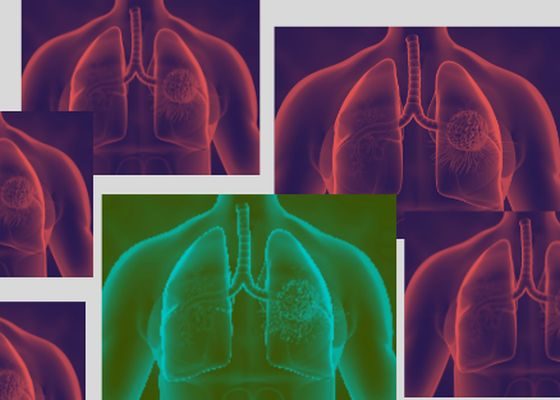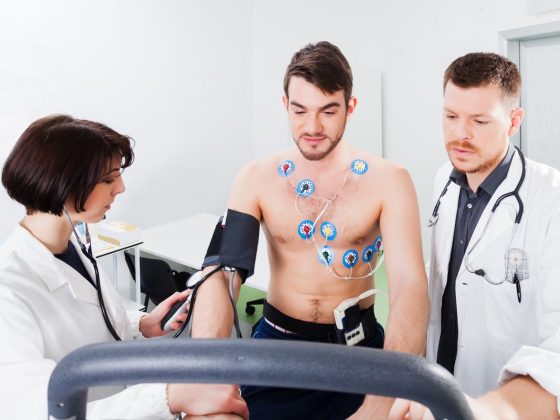Every year, around 2.3 million people across the globe are diagnosed with breast cancer. For lack of access to the right diagnostic test, many of them are being treated with chemotherapy that is doing them more harm than good – often having to make difficult journeys and pay bills they can ill afford, for the privilege.
As cancer care becomes increasingly about matching the right patient with the right drug at the right dose, so efforts to improve access to essential cancer treatments will need increasingly to be matched by efforts to make the testing available to ensure the right treatments are used in the right patients.
Achieving this goal will require finding alternatives that are cheaper, more automated, and require less high-level expertise, high-end laboratory equipment, and transport of biological specimens than the diagnostic tests that precision cancer medicine currently relies on.
Developing these technologies is a rapidly expanding field within the healthcare industry, driven by progress in machine learning and artificial intelligence. The approach involves capturing detailed data usually from digital imaging of a specimen, and comparing it to vast quantities of imaging results for which the diagnostic information and clinical outcomes are already known.
As usual, breast cancer seems to be ahead of the curve, with a number of companies working on AI-based risk scoring that could guide the use of chemotherapy in patients with early hormone receptor-positive disease.
One such company is PreciseDx, a New York based company launched in 2020, which grew out of research conducted within the Mount Sinai Health System. This year (2023), the company is set to commercialise its test, providing a risk stratification score for breast cancers that it claims can achieve “unmatched accuracy and consistency across patients,” due to its “AI-powered insights and intelligence.” Because they work from digital samples, that will have been scanned locally to the patient, the test, they say, “eliminates geographic limitations, enabling the democratisation of care”. The company is also working on a similar diagnostic algorithm for prostate cancer.
Another example is Digistain, a UK based company launched in 2021, which developed its breast cancer risk scoring test on the back of research conducted at Imperial College, London, backed by Cancer Research UK and led by a professor of solid-state physics, at Imperial’s Biomedical Optics Division, working in collaboration with the then head of histopathology at Cancer Research UK and professor of histopathology at Barts Hospital in London.
This test is already approved for the UK market, and is being promoted by the NHS Innovation Accelerator for use within the UK’s National Health Service as an alternative option to genomic tests that have been available for many years. But it is also starting to come into clinical use in some hospitals in India, Malaysia, Thailand, Ecuador, and some African countries.
“The test is being developed specifically for the lower income countries – countries that are on the target list of the WHO for example,” says Hemmel Amrania, who co-led the early development work at Imperial, and went on to co-found the spin-off company.
The big advantage of tests based on digital imaging is that they can be done in fairly basic settings without any need for a traditional wet lab or high volumes of reagents, beyond what is needed to identify hormonal and HER2 status. There is no need for the RNA extraction and reverse transcription polymerase chain reaction processes involved in the genomic tests. In the case of Digistain, tissue sections don’t even require staining.
The Digistain technique relies on mid-range infrared spectroscopy scanning, with the analytical heavy-lifting work done by the AI software algorithm, which reads a ‘spectral signature’ of more than 10,000 data points, and factors in other clinical/pathological data, to deliver a quantitative risk score. The scanning and analysis take less than an hour from start to finish.
The simpler, highly automated, requirements of the technology, also keeps the cost down.
With the AI-based digital imaging test costing around quarter the price of the genomic test he expects much greater take-up
Eligible patients with early hormone-receptor positive breast cancers treated at the Apollo group of hospitals in India are among those now offered the test, as a more affordable alternative to genomic tests such as OncotypeDx, Mammaprint or others. As Manish Singhal, senior oncologist at Apollo Hospitals in Delhi explains, at around $3,900, the cost of the genomic test is between four and six times greater than the cost of chemotherapy ($600–1,000), so most patients generally opt to just go with the chemotherapy, and suffer the side-effects. “It is our job to tell our patients about the genomic tests, but there were hardly any takers for them,” he says. With the AI-based digital imaging test coming in at around $900 – quarter of the price of the genomic test – he expects many more people to take up the opportunity.
How it works
Like all risk stratification tools for early hormone positive breast cancer, Digistain also takes into account factors such as tumour size, and nodal status, etc. It uses mid-range infra-red spectroscopy scanning to read the sort of grading information traditionally reported by pathologists looking at a stained biopsy slide under a microscope. In this case, however, the spectroscopy is able to build up a much more detailed and in-depth picture, using objective measurement.
Digistain’s AI software then compares that data with data obtained from scanning tissue specimens from more than 1,500 patients who had been treated in hospitals across the UK, with known recurrence and survival data.
The software was validated in a retrospective study, presented at the 2022 San Antonio Breast Cancer Symposium, involving the tissue and clinical outcomes for a different set of more than 900 patients. It showed the Digistain Index is a highly significant prognostic factor for five-year survival in hormone-positive breast cancer, with a P-value of 0.0018.
Cutting delays
Patients in the UK already have the right to receive testing with OncotypeDx or similar genomic tests if they are diagnosed with an early breast cancer that is hormone-positive, HER2-negative, with no lymph nodes involved, and deemed to be of ‘intermediate risk’ according to the Nottingham Prognostic Index (based on tumour size, nodal involvement and grade). Some patients with 1–3 nodes involved may also have access, depending on where they live.
For Sharaz Khan, head of pathology at Northampton General Hospital, the advantage of using locally performed spectrometry-based testing is primarily that patients get their results faster. “We currently send samples to Texas [where Oncogene Dx testing is done], and it can take anything from three weeks upwards to get a result back.”
He is looking to switch to using Digistain, which involves sending samples to the UK testing centre, as his lab currently has no spectrometer. This gives a result in a matter of days rather than weeks, he says. For the moment, samples from eligible patients are going to Texas for genomic testing as well as to the Digistain centre, to see first-hand how the two compare. “We are doing dual reporting, getting results from both to make sure our oncologists are happy with the quality they get – that they are getting like for like with what they had.”
“We currently send samples to Texas, and it can take anything from three weeks upwards to get a result back”
Diagnostic delays matter, he says, as they cause a lot of anxiety for individual patients, “Anything that takes longer is drawing down on someone’s treatment plan.” They also hinder the concerted effort currently being made by the NHS to recover from the backlog of patients that built up over the Covid-19 pandemic.
And even though the patient is not paying out of their own pocket, the substantially lower cost is not a negligible issue. The department has its own budget, says Khan, “So as a whole we can send away more samples for testing with that same money. If you can get 10 tests out of £10 that is far better than five tests at £20.”
As he points out, this is just the first of many digital imaging-based diagnostic tools using AI that he hopes soon to have access to. He’s keeping a close eye, for instance, on a new test coming over the horizon that promises to automate difficult, time-consuming and subjective diagnostic assessments such as for PDL-1 expression levels to guide the use of immunotherapy in lung cancer.
Precision medicine for all?
“We want to extend the ability to run these tests in hospitals’ own labs,” says Amrania. “Some hospitals already have a spectrometer. Those that don’t will be supplied one off the shelf. Our proprietary software is then used to analyse the spectral data that is generated by the spectrometer.”
The test, he says, has been designed to be adoptable to any pathology laboratory’s workflow, “Any pathology lab in the world could adopt this. It only requires a couple of extra slices of tissue, which takes five extra minutes. We tested this with several lab technicians and operators, and they only received 20 to 30 minutes of training.”
In practice, the hospitals currently offering Digistain risk scoring in India and other resource-stretched settings are all in the private sector and do not want to invest in spectroscopy capacity. They send samples to London for analysis, “which still just takes four days, including logistics,” says Amrania.
The really serious expansion of access to this and other precision diagnostics at a global level, however, will require making it available within universal health coverage systems. “In our road map we do have a government reimbursement model to be explored towards the end of this year. At that point, it would not be our lab but hospitals’ own labs,” he says. “For example, Tata [government funded national comprehensive cancer centre in Mumbai] will have their own spectroscopy equipment in their own labs. And we would provide them with the software.”
And as diagnostics move increasingly towards AI-based digital imaging techniques, the number of hospitals with their own equipment is likely to increase, he adds.
“Many patients in India are in advanced stage, or are triple-negative and HER2 -positive, who have to be treated with chemotherapy”
Quite how big an impact tests like this may have on expanding access to precision cancer medicine remains to be seen, however. Anil Heroor, who is a breast cancer specialist and Head of Surgical Oncology at Fortis Hospital, Mumbai, sounds a sceptical note. “Many patients in India are in advanced stage, or are triple-negative and HER2-positive, who have to be treated with chemotherapy,” he says, and at $900 a go, he argues, the cost will still be prohibitive for most. “I would recommend such tests for a very small subset of patients who are unlikely to tolerate chemotherapy, or are of advanced age or are diagnosed in an early, node-negative stage.”
Manish Singhal, currently offering the test to eligible patients he treats at Apollo Hospital, takes a slightly different view, arguing that, even though the age of Indian breast cancer patients is a decade younger than the Western population, and prevalence of hormone positive breast cancer is 10% lower than in the West, a significant proportion of patients will derive benefit from the test. “If the volume of Digistain users increases, the cost of the test may further drop, so it is expected to benefit a lot of breast cancer patients in India,” he says.
Access to the current genomic prognostic tests is by no means universal for across the countries of Europe
But it’s not just patients in the Global South that could benefit from expanded access to cheaper and easier AI-based precision cancer diagnostics. Access to the current genomic prognostic tests is by no means universal for across the countries of Europe. And as Amrania points out, even within the UK, where all eligible patients have the right to genomic testing, NHS eligibility for those tests is currently limited on the grounds of cost-benefit rather than clinical benefit.
“In the UK the NHS will only pay for genomic prognostic tests if the patient comes in at intermediate risk,” he says – referring to the standard risk assessment done on the basis of histopathology (grading), nodal involvement and tumour size. This is in contrast to the US, says Amrania, where low-risk patients are also included under insurance, on the grounds that the initial risk assessment is open to a significant margin of error, and some patients assessed as low risk actually will need chemotherapy. US health insurance also covers genomic testing for patients with up to three lymph nodes involved, as some of those may also be sufficiently low risk to safely avoid chemotherapy, whereas in the UK access is guaranteed only for patients with no nodal involvement.
Looking ahead to other AI-based tests that are coming over the horizon – to help personalise treatment on prostate cancer, for instance, or use of immunotherapy in lung cancer – it is easy to see how patients and healthcare budgets stand to benefit in parts of the world where precision cancer medicine is already in widespread use.
For countries in the Global South, however, while it certainly brings the prospect of personalised cancer medicine closer, the real impact is unlikely to be felt until more patients are diagnosed early enough to benefit, and more of them have access to the treatments that the precision diagnostics indicate.
This article was proposed by Swagata Yadavar and written in collaboration with Anna Wagstaff
Illustration by: Sara Corsi












